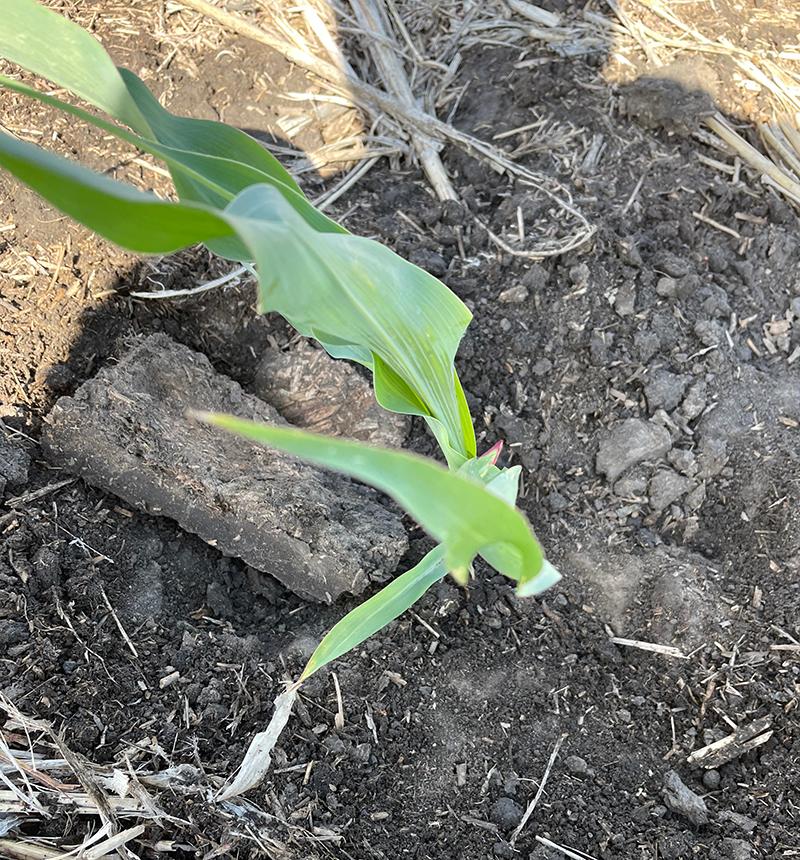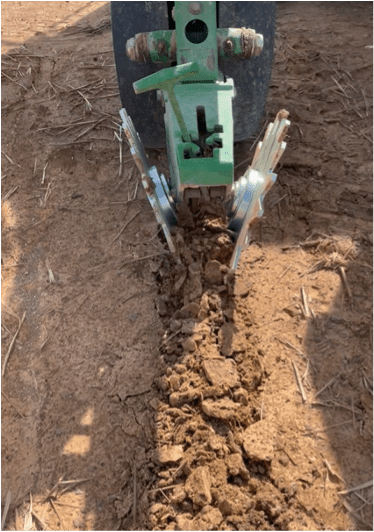by Ethan Begle
As corn fields begin to tassel, it’s easy to spot signs of stress just by driving past. Uneven tassel emergence—where tassels appear several days apart—is often a red flag. This delay typically traces back to early-season challenges like shallow planting or compaction that restricted roots from accessing water and nutrients.
One commonly blamed issue is sidewall compaction. But after more than 20 years of Thompson closing wheels being on the market, why is this still happening?
The truth is that some level of compaction is unavoidable. The opener blade naturally smears the soil as it cuts, and the gauge wheels must maintain contact with the surface to ensure consistent planting depth. Unfortunately, the very things that make accurate planting possible can also lead to compaction.
| Staggering the closing wheels (not mounted straight across from each other) is recommended because it prevents residue clogging but also it stops wheels from pinching soil together over the seed. Good soil structure will give some room for error on too much down force. I always find more issues from too little down force, where some seeds are shallower than others. Too little down pressure allows more row unit bounce, and not enough gauge wheel pressure to prevent premature sidewall collapse. You will not be happy with emergence when these conditions occur. |  Corn plant with sidewall compaction |
Planting into moisture means there will be some shrinking and cracking of the soil as it dries out. The furrow will inevitably crack open in clay soil, but this issue can be lessened by leaving residue over the furrow and not moving it out of the way with row cleaners. If the seed is firmed into the furrow, it will emerge quickly, and furrow cracking later in the season is not an issue.
Narrow gauge wheels are quickly becoming the norm on planters and seeders I see in the field. For good reason, as they run over less residue, which helps to smooth out the row unit ride. After conducting field evaluations, I have yet to determine where sidewall compaction is worse by switching from standard 4.5” wide wheels to 3” wide wheels. All gauge wheel tires have an indentation right along the blade that allows some lifting of the sidewall. So, if you’re considering narrow gauge wheels, this is not a valid reason for being hesitant to upgrade. The narrow tires provide a better row unit ride and usually last longer, as they don’t contact as much residue as wider tires.
Don’t let compaction at planting become a season-long stressor for your crops. Equip your planter with spiked closing wheels to fracture the sidewall. Run enough down-pressure to maintain consistent depth and prevent row unit bounce. And consider upgrading to narrow gauge wheels for smoother performance. Compaction may be unavoidable, but its effects on crops are manageable.

